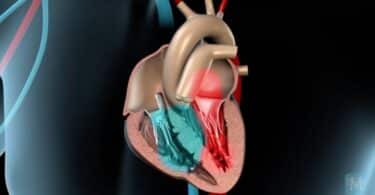Elaine, hi, it’s Kelly here! My daughter had swine flu! I wish I could write it up for you but I wasn’t able to help her much. I tried maybe 8 different remedies during the course of the illness but nothing really helped.

Kelly Young
You should have emailed me!
You’re probably right, I should have. My sister had the same symptoms when she stayed with me the month before. Poor thing was sooo sick – she’s still talking about it! I tried many remedies to no avail.
After she left, I bought 2 more remedies; but, none of them helped my daughter.
I wondered what others have found helpful for this flu because:
- gelsemium
- bryonia
- arsenicum
- aconite
- eupatorium
and a bunch of others did nothing!
The symptoms were as follows: sore throat, high (104 F.) fever, severe body aches, severe chilliness and pounding headache.
How sad. Kelly, as you know, we can’t do anything with those symptoms!
What??? Why not? What do you mean?
The Repertory rubrics (headings) for these symptoms (fever, sore throat, etc.) are so HUGE, so general, that virtually every homeopathic remedy has them!!! You haven’t given me any mentals! There are no modalities, no concomitants….
What?
We need to know what’s peculiar about your fever? What’s strange or characteristic about your sore throat? So, towards that end….
Yes?
….always remember…
Yes?
The Big 4!
The Big 4?
Yes, the Big 4. Repeat after me:
Sensation, Location, Modalities, Concomitants
Sensation, Location, Modalities, Concomitants!
What does “sensation” mean?
“Sensation” is self-explanatory. What does the pain, etc. feel like? It can be sharp, dull, achy, burning, sore, raw, scratchy–there’s no limit to what the sensation might be, you just have to think about it! Don’t tell the homeopath you have a “pain” or something “hurts”, that’s not going to lead anywhere!
“Location” matters for obvious reasons but also because some of our remedies are “right-sided” and others are “left-sided”.
What about “modalities”?
They are REALLY important! If we don’t get the “modalities”, God help us! Modalities are all the things that influence the complaint, for better or worse! For example, if you have the flu, believe it or not, there will be some factors that make you feel either better or worse: some people with the flu are better for sips of water or hot tea, perhaps worse for drafts of air; or better for a hot shower or hand-holding and sympathy; there’s no limit to what might be making you better or worse, you just have to give it some thought.
These little details (“better this” and “worse that”) are called modalities! TRY AND THINK OF EVERYTHING that makes your complaint better or worse! And if your child, or whoever, can’t express himself? Simply observe what he’s doing, what he’s avoiding, what he’s asking for, what he’s saying “no” to, how he’s lying, moving…all these things will give you clues for the modalities.
And what about “concomitants”, what are they?
Concomitant (con-COM-eh-tant) means “associated with” or “along with”. In other words, what symptoms came “along with” your complaint? They are highly valued because they are often the striking, strange, rare and peculiar symptoms we need to hear about to find the right remedy. Take for example…. OK, here’s one that will be familiar to everyone — a headache with nausea. Many people have had this, right? Nausea is the concomitant.
Sometimes body language tells us what we need to know. Bryonia patients are lying perfectly still. Any movement makes them worse, even answering questions makes them worse! Gelsemium patients can’t answer questions because they’re so stuporous, they start to answer but can’t finish. Nux vomica patients are rudely barking orders at people (“I’m still waiting for that glass of water I asked for two seconds ago!”). Arsenicum patients are begging you not to leave because they’re so scared! (“Can’t you just stay for one more minute?”)
Do you need to know anything else besides the Big 4?
Which, again, are?
Sensation-Location, Modalities-Concomitants/Sensation-location, modalities-concomitants!
Very good Kelly! Yes, it would help to know three more things:
1. Is there a time issue? Is the patient worse in the evening? Worse at 9 p.m.? Worse at midnight, etc.? Think of this as the Time Modality. I once literally had a cough that came on at 11:30 every night without fail!
2. Did the complaint come on suddenly or gradually? Complaints that come on suddenly are often covered by just two remedies: Aconite and Belladonna! (Or Baptisia if the complaint is more septic.)
Really? And what does septic mean?
Sepsis is characterized by bad odors, stupor, muscle aches and confusion. If a septic condition comes on suddenly, think of Baptisia. Baptisia is thought of as a thirsty Gelsemium: stupor, apathy and an inclination to sleep. Now for # 3. I’m leaving the best for last.
What’s that?
3. Etiology!
Etiology means the cause. Right?
Yes, it means “what caused your complaint?” It’s so important to know this! The remedy must cover it! Unless the etiology is something really vague, like, “germs”, it alone could be so valuable as to solve the case for you! For example, you can think you have a Belladonna case if you don’t ask, “What caused this?” Because an allergic reaction needing Apis can look a lot like Belladonna: redness and heat in the affected area.
So, people, take note:
Etiology Over-rules Symptomatology!
Or stated simply, etiology over-rules the totality of symptoms. Consider the following (remember that etiology is expressed in our Repertory as “Ailments From”:
Ailments from cold/dry winds–Aconite
Ailments from acute grief–Ignatia
Ailments from eating fatty, rich food–Pulsatilla
Ailments from over-excitement from good news–Coffea
Ailments from cold/damp weather–Rhus tox.
Ailments from blunt trauma–Arnica
That’s the end of the case! We scarcely need to know anything else, such is the importance of etiology.
So, getting back to your daughter’s flu, when you say “sore throat”, we would have to ask:
What was the sensation of the sore throat?
What made it better or worse (the modalities)?
Where in the throat is it, right side? left side? (location)
What’s associated with it, what came along with it? (the concomitants) Cough? Fever?
We need to do this for every symptom in the case. A properly delivered symptom should sound like this:
I have a sore throat on the right side, bright red, sharp pain on swallowing, I’m very cold, I’m also thirstless; my feet are freezing and I’ve got a throbbing right-sided headache and any light is making me worse.
This is a “complete symptom”!
“I have a sore throat” means nothing to a homeopath! You have no hope of finding a remedy unless you learn to talk in “complete symptoms”!
Right, I got that: sensation, location, modalities, concomitants. And etiology. What else does the homeopath have to know?
Appearance. Notice I said the throat was red. Everything I said above adds up to Belladonna. Thirstless, cold feet, right-sided, throbbing headache, sharp pains, very cold, light aggravates…it’s all Belladonna. So, what else?
The “Generals! These are all the symptoms that start with the word “I” or “I’m”. I’m cold, I’m freezing, I can’t stand to have the light on, I don’t want to talk, I want to be alone, I want to sleep, etc. Then there are the “locals”, the symptoms that start with “My”. “My throat is sore.” The “Generals” carry more weight. If you can’t find a remedy that matches the whole case, at least make sure you’ve matched the Generals, you can be very successful with that.
Now, let’s say you’ve done all this fancy questioning, you’ve taken a proper case, and no remedy covers the picture really well the way our Belladonna example just did, or all you’ve got are common symptoms like “runny nose” and “cough”. Then look for the “concomitant” in the case because that might be your salvation! For instance, maybe you can’t figure out the patient’s fever remedy but you see a clear mental presentation: he’s very irritable, impatient and rude–that’s the concomitant! We call it the “mental concomitant”. It’s probably Nux vomica! They’re very irritable and have no patience and everything bothers them: noise, light, talking, odors, a draft of air…. They can hear a pin drop and get angry! This presentation is of more value than their fever or cough. It tells you exactly what the remdy is!
If there are no concomitants, no modalities, no definable sensations, or etiology, a “nosode” should be tried. Nosode means a “disease” remedy, a remedy made from the disease. For example, one of our flu remedies is called “Influenzinum”, it’s a remedy made from the flu.
Anything else you need to know in taking an acute case?
Since you mention it, you should know what you have! I mean, is it the flu or an allergy or what? Knowing what you have gives you some direction, some orientation. Which chapter of the Repertory are you supposed to look in? Most of the time there’s no need to go to the doctor for a diagnosis because it’s a virus or something you’re very familiar with. Other times, you may not know what you have but you observe a keynote of a remedy, such as the blood rushing all to one area resulting in a throbbing pain, as with Belladonna. Robin Murphy always used to say, if you see a keynote of a remedy, give the remedy.
Should we recap before succumbing to information-overload?
Good idea! You’ve got a sick patient. The first thing you want to know is….
WHAT’S WRONG with him!? What happened? And when did it happen?
Followed by…
DID IT COME ON SUDDENLY? I have to tell you, I was once perfectly well at the bottom of the steps and by the time I got to the top? I was sick! Now that’s sudden onset! And then….
DO YOU KNOW WHAT CAUSED your complaint? For instance, “I’m allergic to peanuts and I didn’t realize that that’s what they made the sauce with!” This tells us our remedy is probably Apis.
(Don’t forget to observe the patient; what’s he doing, what’s he saying, what does he look like?)
then…
Sensation. We’ve already described that. What does the pain, etc., feel like?
Location–Where is it?
WHAT MAKES YOU BETTER OR WORSE (the modalities–including the time of day when the person is better or worse). This is a question most patients don’t get the point of and they will generally say, “Nothing!” Or they will say, “Aspirin.” So you have to give them examples. Consider the following: the weather, the temperature, drafts, hot or cold applications, food, drink, odor of certain things, presence of people, motion, position of body, light, noise, sympathy, touch, pressure, etc.
THE LOCAL SYMPTOMS (they start with the word “my”) The local symptoms must include THE BIG 4:
sensation, location, modalities, concomitants
You need to know this for each local symptom! Don’t tell your homeopath, “My leg hurts! My scalp itches!” Say, “My leg hurts in the calf area, I got it from over-stretching, it’s better from rubbing, hot applications and walking around, it’s worse the longer I sit. My scalp itches along the hairline. Scratching makes it worse–it burns! A very hot shower makes it better.”
Remember that Concomitants are any symptoms that are along for the ride. They may be “normal” but out of place, or in excess, or less than what you’d expect like lack of thirst during a fever.
IF THE CASE HAS A NOTICEABLE MENTAL/EMOTIONAL CONCOMITANT, THE REMEDY MUST MATCH THAT above all else! I would imagine that only a compelling etiology could trump the mental/emotional concomitant.
By the way, your homeopath is going to ask you to describe your symptoms anew each time you get the same complaint because she — or he — knows that just because you had a headache before, doesn’t mean that this headache is the same as the last one! Don’t say, “I’ve got a headache again!” Talk in complete symptoms!!!! Say, “I have a headache on the right side (location) that came on suddenly (onset) after being out in the sun (etiology) and it feels like a throbbing in my head (sensation) and it’s worse lying flat, better sitting up, worse in bright light (modalities), I’m also nauseous (concomitant) and I’m thirstless (concomitant).” What remedy is this? It’s Belladonna again! Can you come up with Belladonna just by hearing that someone has a headache? No! As you can see, Belladonna has a certain KIND of headache.
Is there a hierarchy of symptoms?
Funny you should ask! It just so happens there is! We’ve already said that etiology over-rules symptomatology, and that Generals are more important than Particulars (Locals) and that the mental/emotional concomitant is more important than the physical generals in terms of selecting a remedy; so, here it goes, The Hierarchy of Symptoms:
Etiology (the cause)
Diagnosis/name of the condition–aka, “The Chief Complaint” (ask patient to describe it in his own words)
Onset–When did it start? Was it sudden or gradual?
Appearance–what does the patient or the damaged part look like? What does he “say” and “do”? (He may say things like, “I’m doomed!” or “Stop asking me questions!” all clues to the remedy; he may be tossing and turning or lying perfectly still; all important information.)
Generals (“I’m hot”, “I’m cold”, “I’m anxiety-ridden”, “I’m sleepless”, etc.)
Locals (the big 4, which are, again?)
Sensation, Location, Modalities, Concomitants; Sensation, Location, Modalities, Concomitants!
Very good! Let’s move on to discharges.
Discharges??? Oh geez, when does it end?!
If there are discharges, you’ll need to know their color, odor and consistency. (Yellow and stringy, etc.) You’ll also want to know if they create a sensation–like burning, irritation or itching, etc.
OMG.
Well look, Kelly; that could be the whole complaint! A person’s got a discharge; now, what are you going to do?
OK, OK….
Plus, for heaven’s sake, don’t mix up acute and chronic symptoms! Don’t tell the homeopath you’re thirsty if you’re ALWAYS thirsty! Don’t tell him you’re irritable if you’re ALWAYS irritable. What we want to know is how this complaint has changed you, what’s different about you now that you’re sick?
OK! Enough! I’m starting to get irritable and thirsty!
Me too! This would be a good time to stop (mainly because I’ve got a sink full of dirty dishes!) Did you know, Kelly, that Acute Prescribing and Emergency Prescribing are the highest form of homoepathy?
I had no idea.
By knowing how to solve acute cases, you can stop a complaint from going chronic! You can save a person’s life! You can stop a person’s suffering! Even people with chronic disease develop acutes of one kind or another and we have to be able to step in and stop the suffering!
Good point! I’m leaving. Nothing personal.
Will I see you in the Quiz section, Kelly? Kelly????
Mom, Kelly just left, remember?
Well that’s just great, isn’t it!
Shouldn’t we go home and start dinner? I’m pretty sure everyone knows how to give their case to a homeopath now.
Well, if you say so…….Where’s my hat? Taxi!!!!
_____________________________________
Elaine Lewis, DHom, CHom
Elaine takes online cases. Write to her at [email protected]






Dr. Elaine,
May God give you a very very long life so that you can continue to guide and provide information on homeopathic treatments to ignorants like us. Your style is fabulous and inimitable, so simple yet so effective. This was a wonderful article on acute prescribing and the 4 guiding principles were so nicely explained. Your “Quizzes” are another source of learning and I simply love them.
Please keep it up.
Nisar
I would like to thank you from the bottom of my heart. May you live a very long life,
in order to bless the ignorant and untrained, who need to know how to think,so that
every one attains the level of standard in homeopathy worth achieving .
HOW MANY times your e’Quizzes have solved the acute problems only people like me
have to thank you for a wonder full teaching not available in any books.
Once again may the all mighty god bless you for a healthy and long life.
Yours Sincerely,i mean it, Ravi
Thank you for this detailed information! Very helpful indeed! I did find Ars. to be helpful when we had the Swine Flu, but now am having trouble with the latest cold/flu (whatever) going around. I will follow your steps and see what I can figure out! ^_^
God bless!
Heather
Dr.Elaine,
It is really pleasure experience to read your article on acute prescribing. It certainly added to my knowledge in prescribing. thank u madam.
The best article of this month which potency to be applied in the begining in such cases or to be increased according to symptms?
sadanand dixit
Hello everybody, thanks for your encouraging words!!!!!
To Sadanand Dixit, in answer to your question about what potency to use? Maybe this article will help you:
https://hpathy.com/homeopathy-papers/dosing-in-acute-cases-how-often-to-take-the-remedy-and-in-what-potency/
This article is very informative and throws more light on the treating of individuals on symptoms. The author’s initiative is higly appreciated.
Thank you S.
Here’s a related article you might find useful:
https://hpathy.com/homeopathy-papers/acute-vs-chronic-remedies-the-hierarchy-of-symptoms-and-the-kitchen-sink/
Elaine, your enthusiasm is infectious (pun intended)! It is so helpful to have these articles, for professionals, students & patients alike.
Sorry to hear about your infection, Erica; remember:
Sensation, Location, Modalities, Concomitants!
Elaine
Potency Selection in Acute Prescribing
(Reprinted from “Tips and Secrets”)
People wanted to know, in conjunction with my article on acute prescribing, (https://hpathy.com/homeopathy-papers/acute-prescribing-in-homeopathy-even-you-can-learn-to-do-it/) what potency to use? Generally, nothing less than a 30C, three times a day for three days. Usually if you’ve seen no progress by then, it’s the wrong remedy. Or, one dose of a 200C or 1M. The more severe the complaint, the higher the potency should be.
If an acute has just started, you should see results almost immediately if you’ve used the right potency. If the acute has been around for a few days or a week or two, you may not see results for two or three days. As soon as you see a striking improvement, stop dosing. Resume dosing if the case stalls or relapses.
If you see an aggravation, stop dosing. An improvement may follow shortly if the remedy was correct. Generally, the rule in acute dosing is “as needed”. You were improving, then you started to relapse, now it’s time to redose.
Your first dose can be “dry”, but if there is to be subsequent dosing, put the remedy in water! Use disposable cups or bottles. If you use a bottle, always shake or succuss the bottle before each dose. If you use a cup, stir the cup before each dose with a straw or other disposable implement. If you think you can get away with taking multiple doses dry, you will be in for a big surprise! You may prove the remedy or you may antidote all the progress you’ve made to that point! (See aph. 247 of the Organon).
Elaine Lewis, C.Hom.
(See the Quiz section for more of Elaine’s tips on acute prescribing)
First, I read the instructions about “do not post general feedback” and “Share your views and opinion about this article” and not quiet sure if I should be posting here? Anyway, the article is super good. Elaine, besides having an excellent knowledge of homeopathy, has a way of explaining it in her writings that make it so easy to understand. She provides many examples which help to clarify all the fine points she makes. I just don’t have the words to express just how much I enjoy Elaine’s articles. I will try to remember all that she says so I can apply it. I don’t feel comfortable to try her quizzes yet but I’ve got the urge to soon try. Please pass this on to her and I appreciate her so much. Thank You Elaine and Ezine.
I think acutes are so difficult and exasperating. I have been fortunate enough that usually my children’s stomach flus have been thwarted by a dose of Arsenicum. Not so this time and my luck seems non-existent.
I have tried to go through your articles, take notes and more carefully choose for acutes, but today I am missing something I think. It is more difficult with the children, as they will not offer much, so most I can gather is through observation.
My son woke up this morning and vomited. So I am guessing that is sudden onset? He has continued vomiting, but no fever and no periodicity. I just could not see the top 3 sudden onsets in that, but is that where I am going wrong? : (
He has vomited now 5 times today. It seems especially triggered by drinks. I am trying to get him to sip, but he seems thirsty, so that is difficult. He has eaten more recently and kept it down, but I am fairly certain as soon as he has another bit of drink he will vomit again, as that has been the pattern. He still desires to eat though and is hungry, so I have let him have bland soft things. He is a bit pale. He has had 2 BM’s today, but not loose. That is more than normal for him.
No other discharges. I did notice a cold sweat the second time he vomited. Otherwise, he has said he was chilly most of the day, but again no fever. This morning he wanted fresh air and was outside a long while. Walking about was worse. Better from sitting up and lying down. The last several hours he has just laid on the couch, only getting up to go urinate, then right back.
No real mentals. He is not whining or crying or irritable or anything really- just there. I guess that would be lethargy.
I have tried Arsenicum, Bryonia, and Ipecac so far to no avail. I have considered Baptisia and also Veratrum. Is there something obvious I am missing here?
Listen, I considered Baptisia and Veratrum also! Why not try Baptisia first, especially if there are bad odors associated with the case.
Elaine is a great writer! I am a new patient of hers and her writing is superb! Even patients can learn something, and that means she is a great writer! keep up the good work!
Elaine I Love You. I find your articles so amazing and informative that I have to take notes…you do have a way with words…I am not a doc, and I’ve never been to one, thanks to homeopathy and you and lots of other people like you.I treat my husband, my little girl and my family and me. Looking forward for more such articles from you. Thank you so much.
Very much interesting article .The whole thing explained in a simple way
A good article
What’s about taking multiple remedies. For example in case of Psoriassis – Sulphur, Throdinium & Psorinum in 200C three times day. What should be the gap in each remedy or can be taken together. Duration – longer period for a month or two.
Curing is slow, in between eruptions are there. Kindly guide and oblige.
With best regards,
KK Garg
200C three times a day? That is over-dosing for sure, unless you can make a case for why it would be necessary. We don’t want to harm our patients, right? About multiple remedies, and you used the example of psoriasis. You simply have to take the case of it. What is the sensation? Does it itch, for example? Where is it located? What makes it better or worse? If it itches, what makes the itching better or worse? What is the appearance? Are there any concomitants–symptoms that accompany it, like joint pain? When you do this, your assumption about Sulphur may be way off if you find out they’re better from a hot bath and better from the warmth of the bed. Once you think you know what the remedy is, and since this is a chronic case, give a 6C, in water, three times a day, succuss 5 times before each dose, and be prepared to adjust your dosing schedule and potency based on how the patient reacts to the remedy. You might want to buy a book on therapeutics; in other words, a book of diseases and the most often-prescribed remedies for that disease so that you can look up psoriasis and see if there’s a remedy that matches the case you’re prescribing for.